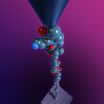(Press-News.org) SEATTLE—Try to schedule your screening mammogram during the first week of your menstrual cycle. It might make breast cancer screening more accurate for pre-menopausal women who choose to have regular mammograms. This recommendation comes from an article published online December 3 in Radiology by Diana Miglioretti, PhD, a senior investigator at Group Health Research Institute.
Dr. Miglioretti and her co-authors are working on an issue at the heart of recent controversies about breast cancer screening mammograms. In November 2009, new recommendations—including that women should discuss with their doctors whether to begin having regular screening mammograms at age 40 or wait till age 50—were issued by the U.S. Preventive Services Task Force, an independent panel of health care providers who generate medical guidelines based on clinical research.
Some facts related to the new recommendations prompted the study by Dr. Miglioretti and colleagues:
Mammography can detect cancer in women in their 40s.
But these women are at higher risk than are older women for a false-negative result (missing a cancer that is present) or a false-positive result (recalling a woman for further workup when cancer is not present).
False positives lead to unnecessary tests, including biopsies.
Women in their 40s tend to have dense breast tissue, making their mammograms hard to interpret. Dense breast tissue shows up as white on a mammogram and can obscure abnormal findings, which are also white.
Breast density varies slightly with menstrual cycle.
Dr. Miglioretti's team asked whether mammography conducted at different times in the menstrual cycle, when breast density may be different, is more sensitive for finding breast cancers or more specific for ruling out cancer. They examined 387,218 screening mammograms from premenopausal women. Of these, 1,283 were linked to an actual case of breast cancer. The data were from the Breast Cancer Surveillance Consortium, a network of research sites nationwide—including Group Health Research Institute, which has collected breast cancer screening data since 1994.
"Premenopausal women having regular screening mammography could benefit from scheduling their exams during the first week of their menstrual cycle," says Miglioretti. She and her collaborators found that in the first week, when breast tissue may be less dense and not engorged, mammography was more sensitive at detecting cancer. Specificity, which is the ability to reliably recognize the absence of breast cancer, did not change with menstrual cycle.
Miglioretti notes, however, that the increased sensitivity was only for women with a screen in the past two years, who were assumed to be having regular screens, and not for women being screened for the first time. Miglioretti says this result was "surprising," but offers some possible reasons. In general, when first screens find a tumor, it's relatively large. Low breast density is more important for detecting small tumors, so the menstrual cycle influence might not have been seen for first screens. "Larger tumors may be easier to see later in the menstrual cycle, but this needs to be studied," says Miglioretti. In addition, her findings do not apply to diagnostic mammography: mammography performed to work up a symptom such as a breast lump. If a woman finds a breast lump or has another breast concern, she should contact her doctor right away.
Dr. Miglioretti and her co-authors know that women can't always predict their cycle, but say if they can, scheduling during the first week may have an additional advantage. Many women experience breast tenderness in the second half of their cycle, so avoiding this time could reduce mammography discomfort.
Current recommendations are that women aged 50-74 have a routine screening mammogram every other year. Women are encouraged to consult with their health care providers to find a mammography schedule that fits their family history and personal preferences.
INFORMATION:
Dr. Miglioretti's co-authors were Rod Walker, MS, and Diana S.M. Buist, PhD, MPH, of Group Health Research Institute; Zhuo (Tracy) Zhang, MS, of the University of Washington Department of Biostatistics; Emily White, PhD, of the University of Washington Department of Epidemiology, who is also an affiliate investigator at Group Health Research Institute; Donald L. Weaver, MD, of the University of Vermont College of Medicine; Stephen H. Taplin, MD, MPH, of the Applied Research Program, Division of Cancer Control and Population Sciences, National Cancer Institute, in Bethesda, MD; Patricia A. Carney, PhD, of the Departments of Family Medicine and Public Health and Preventive Medicine, Oregon Health & Science University, in Portland, OR; Robert D. Rosenberg, MD, of the Department of Radiology, University of New Mexico, Health Sciences Center, in Albuquerque; Mark B. Dignan, PhD, MPH, Department of Internal Medicine, University of Kentucky, in Lexington.
Funding was from the National Institutes of Health.
Group Health Research Institute
Founded in 1947, Group Health Cooperative is a Seattle-based, consumer-governed, nonprofit health care system. Group Health Research Institute changed its name from Group Health Center for Health Studies on September 8, 2009. Since 1983, the Institute has conducted nonproprietary public-interest research on preventing, diagnosing, and treating major health problems. Government and private research grants provide its main funding.
Bioengineers from the University of California, San Diego developed an explanation for why some types of neurons die sooner than others in the brains of people with Alzheimer's disease. These insights, published in the journal Nature Biotechnology on November 21, come from detailed models of brain energy metabolism developed in the Department of Bioengineering at the UC San Diego Jacobs School of Engineering.
The Alzheimer's insights demonstrate how fundamental insights on human metabolism can be gleaned from computer models that incorporate large genomic and proteomic ...
Reston, Va. — A study published in the December issue of The Journal of Nuclear Medicine identified positron emission tomography/computed tomography (PET/CT) scans as a potentially useful tool for predicting local recurrence in lung cancer patients treated with radiofrequency ablation (RFA). RFA, which uses localized thermal energy to kill cancer cells, is increasingly used as an alternative treatment for patients unable to undergo surgery or other therapies to treat lung cancer.
"This study reinforces the utility of 18F-FDG-PET imaging in cancer detection and follow-up ...
In conversation, we often imitate each other's speech style and may even change our accent to fit that of the person we're talking to. A recent study in Psychological Science, a journal of the Association for Psychological Science, suggests that imitating someone who speaks with a regional or foreign accent may actually help you understand them better.
"If people are talking to each other, they tend to sort of move their speech toward each other," says Patti Adank, of the University of Manchester, who cowrote the study with Peter Hagoort and Harold Bekkering from Radboud ...
In a few years, a sip of Cabernet Sauvignon, Merlot or Pinot Noir may include a taste of the "Show-Me" State. The state grape of Missouri – the Norton variety grown at many vineyards around the state – is resistant to powdery mildew, a fungal pathogen that affects winemaking grapes around the world. Now, researchers at the University of Missouri are working to identify valuable genes from the Norton grape for eventual transfer into other grapes to make them less susceptible to mildew, decrease fungicide use and increase world-wide grape production.
Walter Gassmann, ...
The American Physical Therapy Association (APTA) is pointing to a new study on low back pain in Medicare patients in its efforts to encourage the newly established Center for Medicare and Medicaid Innovation to promptly launch a demonstration project on direct access to physical therapist services that was recommended in the recent health reform law. The study, published in the journal Spine, showed Medicare patients who received physical therapy in the acute phase following an episode of low back pain were less likely to receive epidural steroid injections, lumbar surgery, ...
URBANA – University of Illinois scientists have learned to mask the bitterness of ginseng, a common ingredient of energy drinks.
"Consumers like to see ginseng on a product's ingredient list because studies show that it improves memory, enhances libido and sexual performance, boosts immunity, and alleviates diabetes. But the very compounds that make ginseng good for you also make it taste bitter," said Soo-Yeun Lee, a U of I associate professor of food science and human nutrition.
In an earlier study, Lee and U of I professor of food chemistry Shelly J. Schmidt found ...
WASHINGTON, Dec. 6—Recent progress in chalcogenide glass photonics has been driven by scientific and technological challenges in a variety of areas. These range from increased demand for bandwidth in optical communications, to the emergence of bio-health hazards associated with hazardous microorganisms that absorb at mid-infrared wavelengths, to defense applications that require bright mid-infrared sources. Additionally, chalcogenide glass provides a platform for fundamental investigations of light-matter interactions in nanophotonic structures, such as photonic crystals ...
Dead whales that sink down to the seafloor provide a feast for deep-sea animals that can last for years. Previous research suggested that such "whale falls" were homes for unique animals that lived nowhere else. However, after sinking five whale carcasses in Monterey Canyon, researchers from the Monterey Bay Aquarium Research Institute (MBARI) found that most of the animals at these sites were not unique to whale falls, but were common in other deep-sea environments as well. Nonetheless, the whale-fall communities did include a few very abundant animals that were "bone ...
WHAT: The costly, time-consuming process of making, distributing and administering millions of seasonal flu vaccines would become obsolete if researchers could design a vaccine that confers decades-long protection from any flu virus strain. Making such a universal influenza vaccine is feasible but licensing it may require innovation on several fronts, including finding new ways to evaluate the efficacy of vaccine candidates in clinical trials, conclude scientists from the National Institute of Allergy and Infectious Diseases (NIAID), part of the National Institutes of Health. ...
HOUSTON -- (Dec. 6, 2010) -- With new tools that can grab individual strands of DNA and stretch them like rubber bands, Rice University scientists are working to unravel a mystery of modern genomics. Their latest findings, which appear in Physical Review Letters, offer new clues about the physical makeup of odd segments of DNA that have just one DNA base, adenine, repeated dozens of times in a row.
These mysterious "poly(dA) repeats" are sprinkled throughout the human genome. Scientists have also found them in the genomes of animals, plants and other species over the ...


